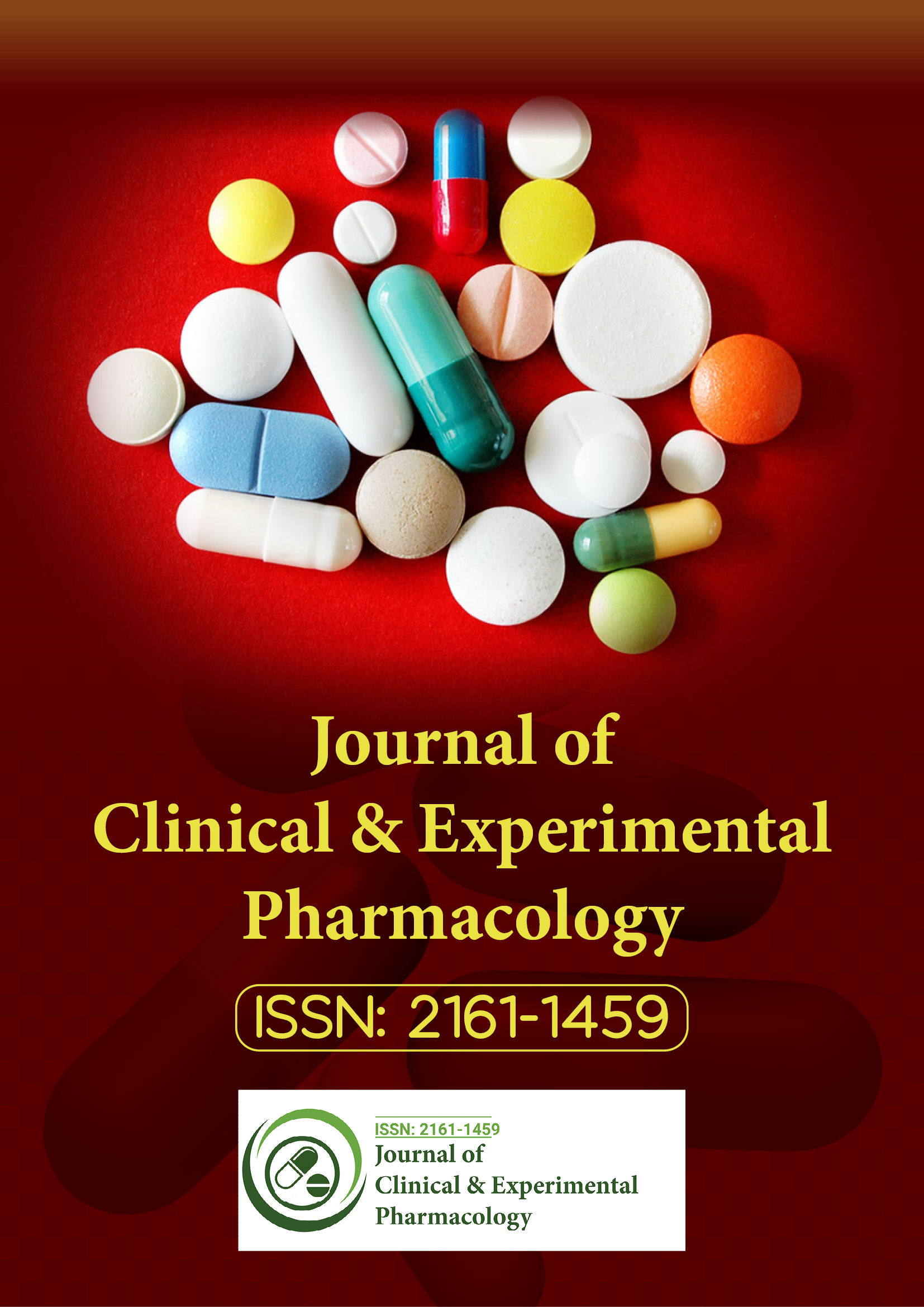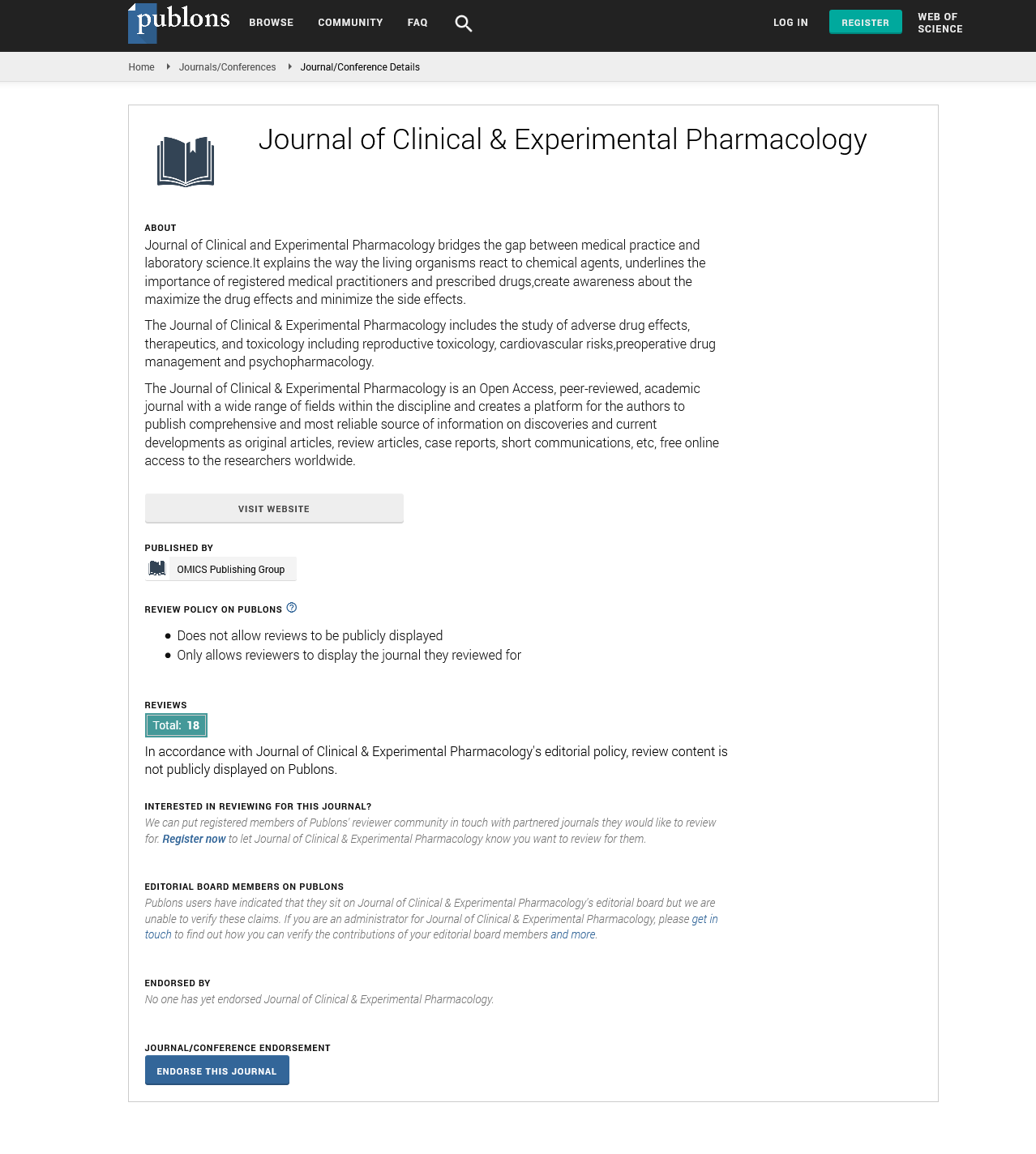Indexed In
- Open J Gate
- Genamics JournalSeek
- China National Knowledge Infrastructure (CNKI)
- Ulrich's Periodicals Directory
- RefSeek
- Hamdard University
- EBSCO A-Z
- OCLC- WorldCat
- Publons
- Google Scholar
Useful Links
Share This Page
Journal Flyer

Open Access Journals
- Agri and Aquaculture
- Biochemistry
- Bioinformatics & Systems Biology
- Business & Management
- Chemistry
- Clinical Sciences
- Engineering
- Food & Nutrition
- General Science
- Genetics & Molecular Biology
- Immunology & Microbiology
- Medical Sciences
- Neuroscience & Psychology
- Nursing & Health Care
- Pharmaceutical Sciences
Opinion Article - (2025) Volume 15, Issue 2
Drug Therapy for Respiratory Diseases: Pharmacodynamic Insights and Clinical Applications
Nelson Philips*Received: 24-Mar-2025, Manuscript No. CPECR-25-28869; Editor assigned: 26-Mar-2025, Pre QC No. CPECR-25-28869 (PQ); Reviewed: 10-Apr-2025, QC No. CPECR-25-28869; Revised: 18-Apr-2025, Manuscript No. CPECR-25-28869 (R); Published: 25-Apr-2025, DOI: 10.35248/2161-1459.25.15.479
Description
Respiratory pharmacology focuses on the study of drugs that affect the respiratory system, particularly those used in the treatment of conditions such as asthma, Chronic Obstructive Pulmonary Disease (COPD), allergic rhinitis and pulmonary infections. The respiratory system is susceptible to a wide range of disorders that impair gas exchange and airflow. A diverse group of pharmacological agents has been developed to address these conditions by targeting airway smooth muscle, mucus production, inflammation and bronchial responsiveness.
Bronchodilators
Bronchodilators are drugs that relax the smooth muscle lining the airways, increasing airflow and improving breathing. They are often used in the management of asthma and COPD.
β2-Adrenergic Agonists: These agents activate β2-adrenergic receptors on airway smooth muscle, leading to the activation of adenylate cyclase, increased cyclic AMP (cAMP) and smooth muscle relaxation.
- Short-Acting β2 Agonists (SABAs) such as salbutamol provide quick relief in acute bronchospasm.
- Long-Acting β2 Agonists (LABAs) such as salmeterol and formoterol are used for maintenance therapy.
Anticholinergics (Muscarinic antagonists): These drugs inhibit muscarinic receptors in the airways, preventing acetylcholine-induced bronchoconstriction.
- Short-acting agents like ipratropium are often combined with SABAs for acute treatment.
- Long-acting agents such as tiotropium are preferred for long-term COPD management.
Methylxanthines: Theophylline and related compounds inhibit phosphodiesterase enzymes, increasing cAMP levels and promoting bronchodilation. They also have mild anti-inflammatory properties. Due to narrow therapeutic windows and side effects, their use has declined.
Anti-inflammatory agents
Inflammation is a key feature of asthma and contributes significantly to airway obstruction and hyperresponsiveness. Several drug classes reduce inflammation in the respiratory tract.
Corticosteroids: These agents suppress multiple inflammatory pathways by modulating gene expression.
- Inhaled Corticosteroids (ICS), such as beclomethasone and fluticasone, are commonly used for long-term asthma control.
- Systemic corticosteroids are reserved for severe exacerbations due to greater side effect risks.
Leukotriene modifiers: Leukotrienes contribute to bronchoconstriction, mucus secretion and airway inflammation. Montelukast and zafirlukast are leukotriene receptor antagonists used orally for mild to moderate asthma, especially in patients with allergic triggers.
Mast cell stabilizers: Cromolyn sodium prevents the release of histamine and other mediators from mast cells. It is more commonly used in prophylaxis, particularly in allergic asthma.
Biological therapies
Advancements in biotechnology have led to the development of monoclonal antibodies that target specific pathways in respiratory diseases.
Anti-IgE therapy: Omalizumab binds to IgE and prevents its interaction with receptors on mast cells and basophils. It is used in patients with severe allergic asthma unresponsive to standard therapy.
Anti-IL-5 and anti-IL-4/IL-13 therapies: Mepolizumab and benralizumab target Interleukin-5 (IL-5), reducing eosinophilic inflammation. Dupilumab targets the IL-4 receptor and is useful in both asthma and atopic dermatitis. These therapies are administered via injection and are typically reserved for patients with severe disease not controlled by conventional drugs.
Mucolytics and expectorants
Respiratory conditions often involve increased mucus production, leading to airway obstruction. Mucolytics reduce mucus viscosity, while expectorants enhance the expulsion of mucus.
- N-acetylcysteine breaks disulfide bonds in mucus, making it less sticky.
- Guaifenesin increases hydration of respiratory tract secretions, facilitating mucus clearance.
These agents are commonly used in bronchitis, COPD and cystic fibrosis.
Antitussives
Cough can be protective but becomes problematic when persistent and non-productive. Antitussives suppress the cough reflex, often by acting on the central nervous system.
- Codeine and dextromethorphan are commonly used, with the latter being available over-the-counter.
- These drugs should be used cautiously due to potential sedation or, in the case of codeine, dependency.
Antihistamines and decongestants
Upper respiratory conditions such as allergic rhinitis are managed with antihistamines and decongestants.
Antihistamines: Block histamine H1 receptors, reducing sneezing, rhinorrhea and nasal itching.
- First-generation agents (e.g., diphenhydramine) can cause sedation.
- Second-generation agents (e.g., loratadine, cetirizine) have minimal central nervous system effects.
Decongestants: α-adrenergic agonists like phenylephrine and pseudoephedrine reduce nasal swelling by vasoconstriction. Prolonged use of topical decongestants may cause rebound congestion (rhinitis medicamentosa).
Antimicrobial agents
Pulmonary infections require targeted antimicrobial treatment depending on the causative organism:
- Antibiotics are prescribed for bacterial infections such as pneumonia or acute exacerbations of COPD.
- Antifungal agents are used in cases like aspergillosis.
- Antiviral drugs may be indicated in influenza or Respiratory Syncytial Virus (RSV) infections.
Proper diagnosis and susceptibility testing are essential to guide therapy and reduce resistance development.
Conclusion
Respiratory pharmacology encompasses a diverse array of drug classes tailored to manage airflow limitation, inflammation, mucus production and infections. The choice of treatment depends on the specific respiratory disorder, its severity and patient response. As understanding of respiratory pathophysiology deepens, ongoing research continues to inform the development of new therapeutic options.
Citation: Philips N (2025). Drug Therapy for Respiratory Diseases: Pharmacodynamic Insights and Clinical Applications. J Clin Exp Pharmacol. 15:479.
Copyright: © 2025 Philips N. This is an open-access article distributed under the terms of the Creative Commons Attribution License, which permits unrestricted use, distribution and reproduction in any medium, provided the original author and source are credited.

